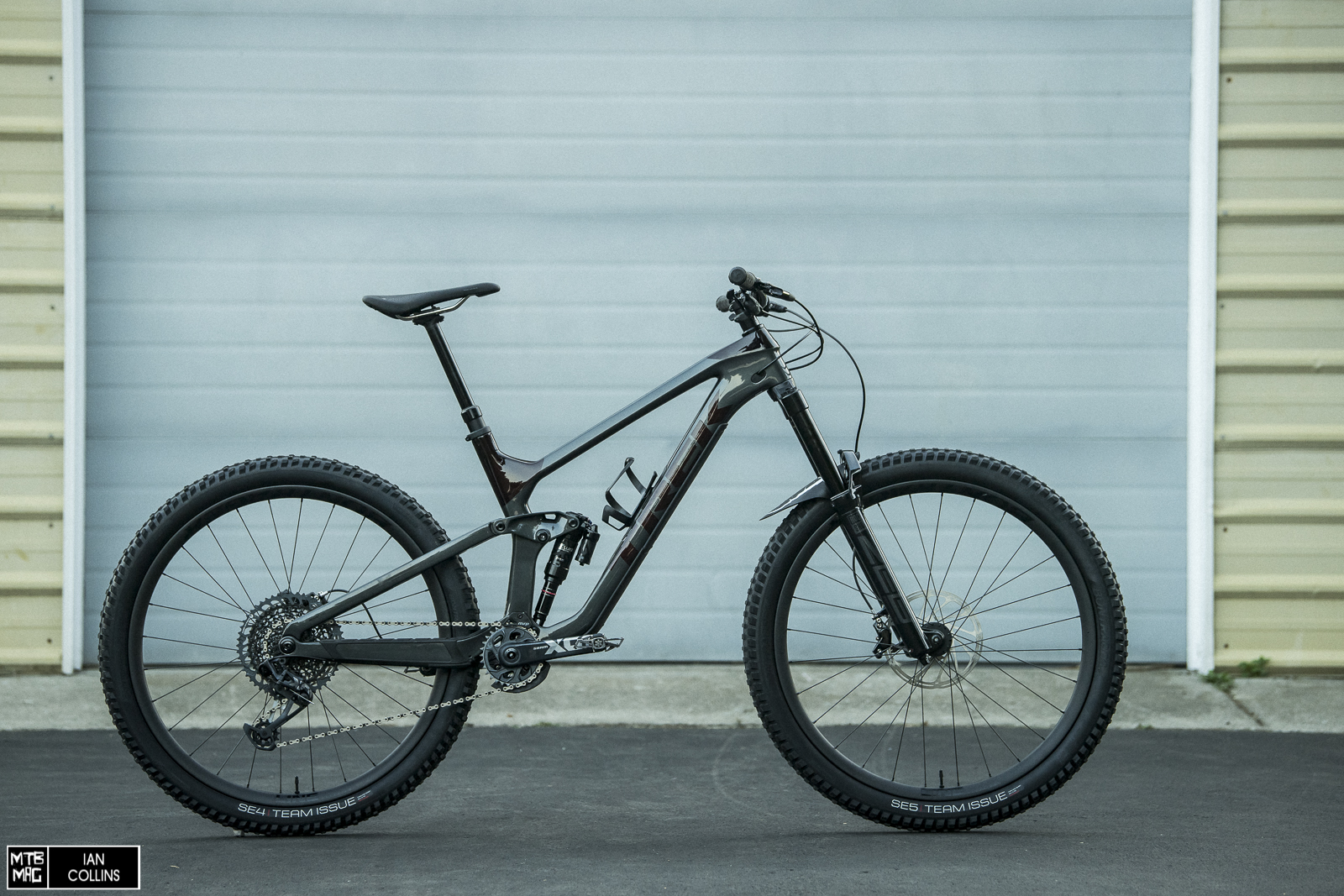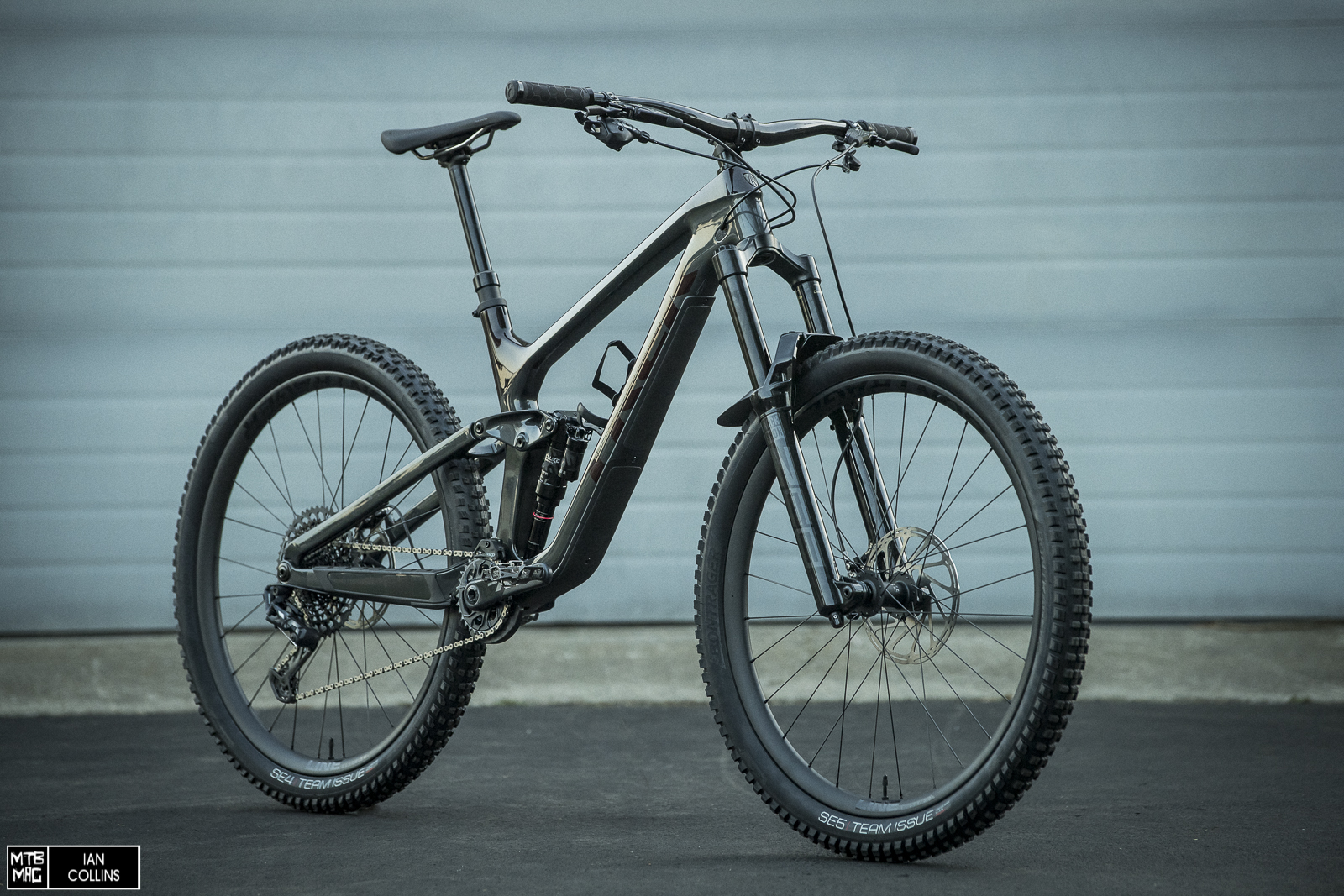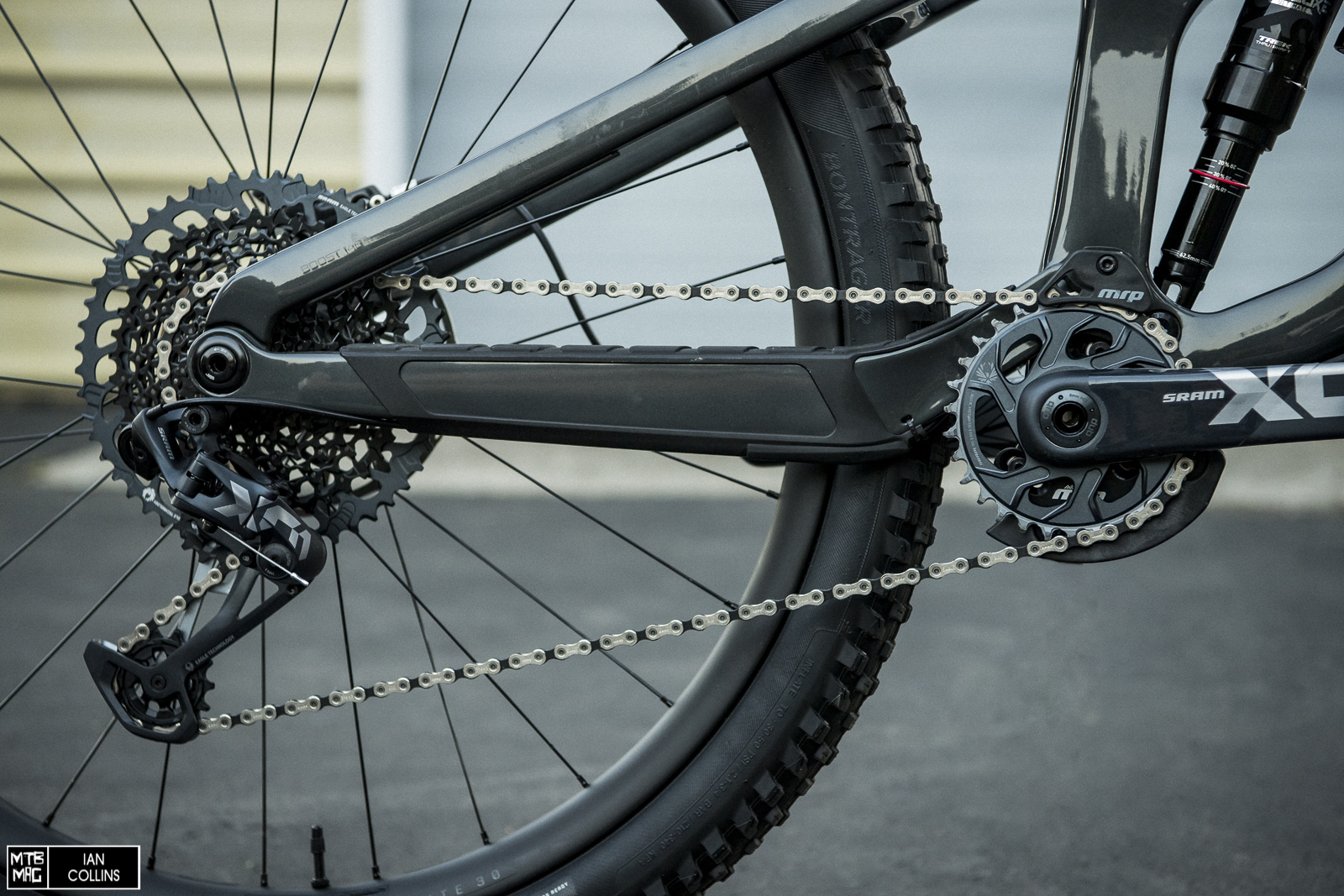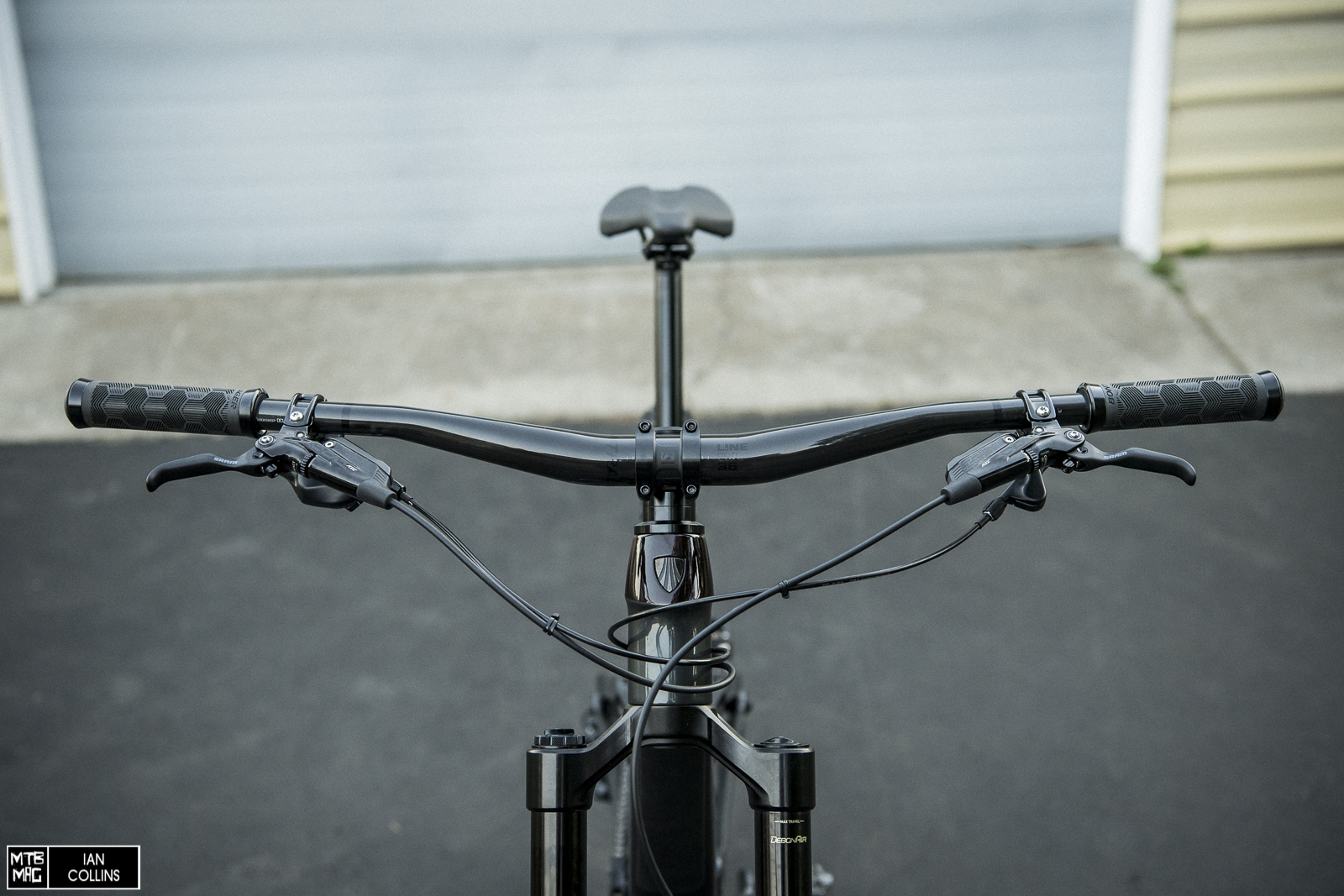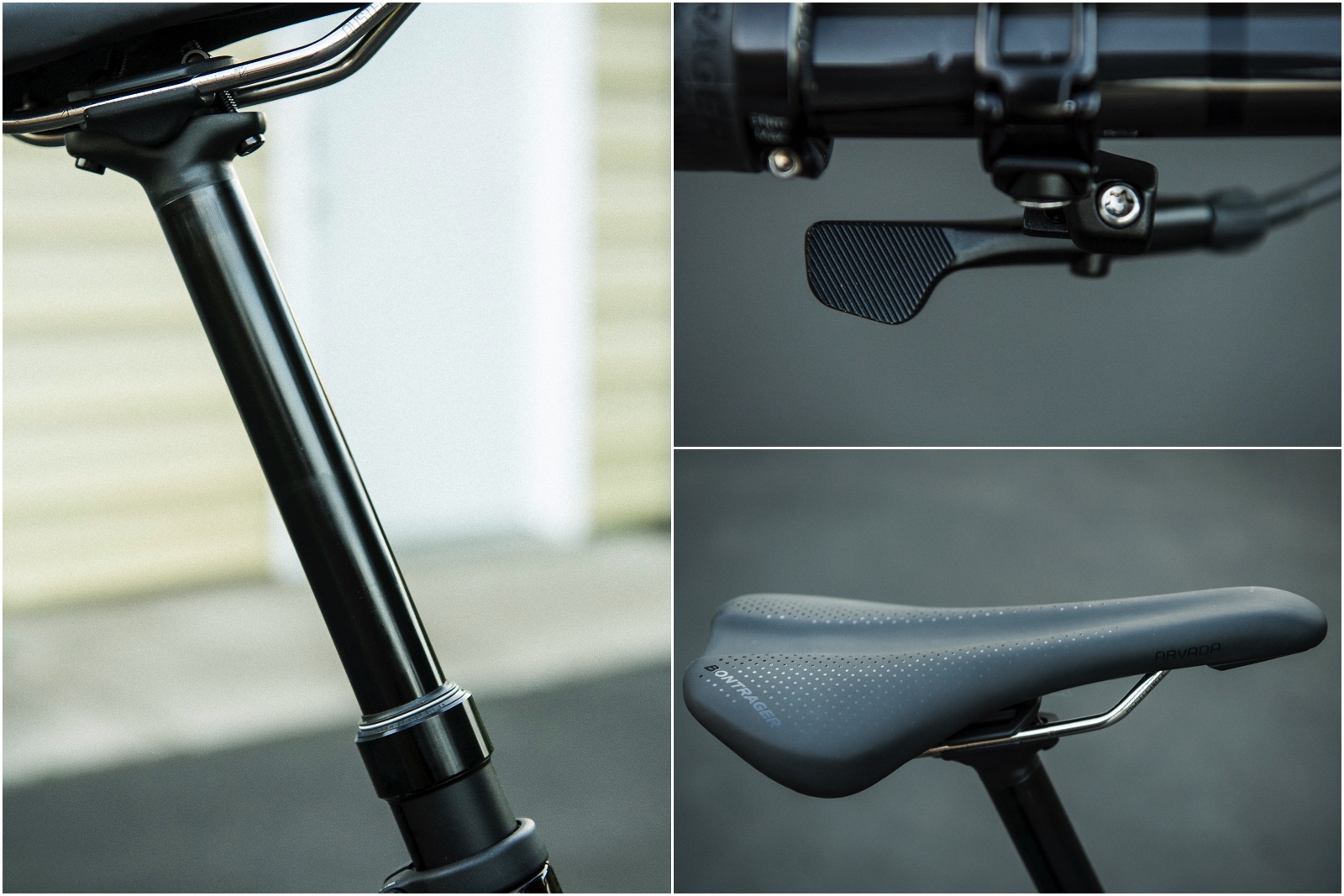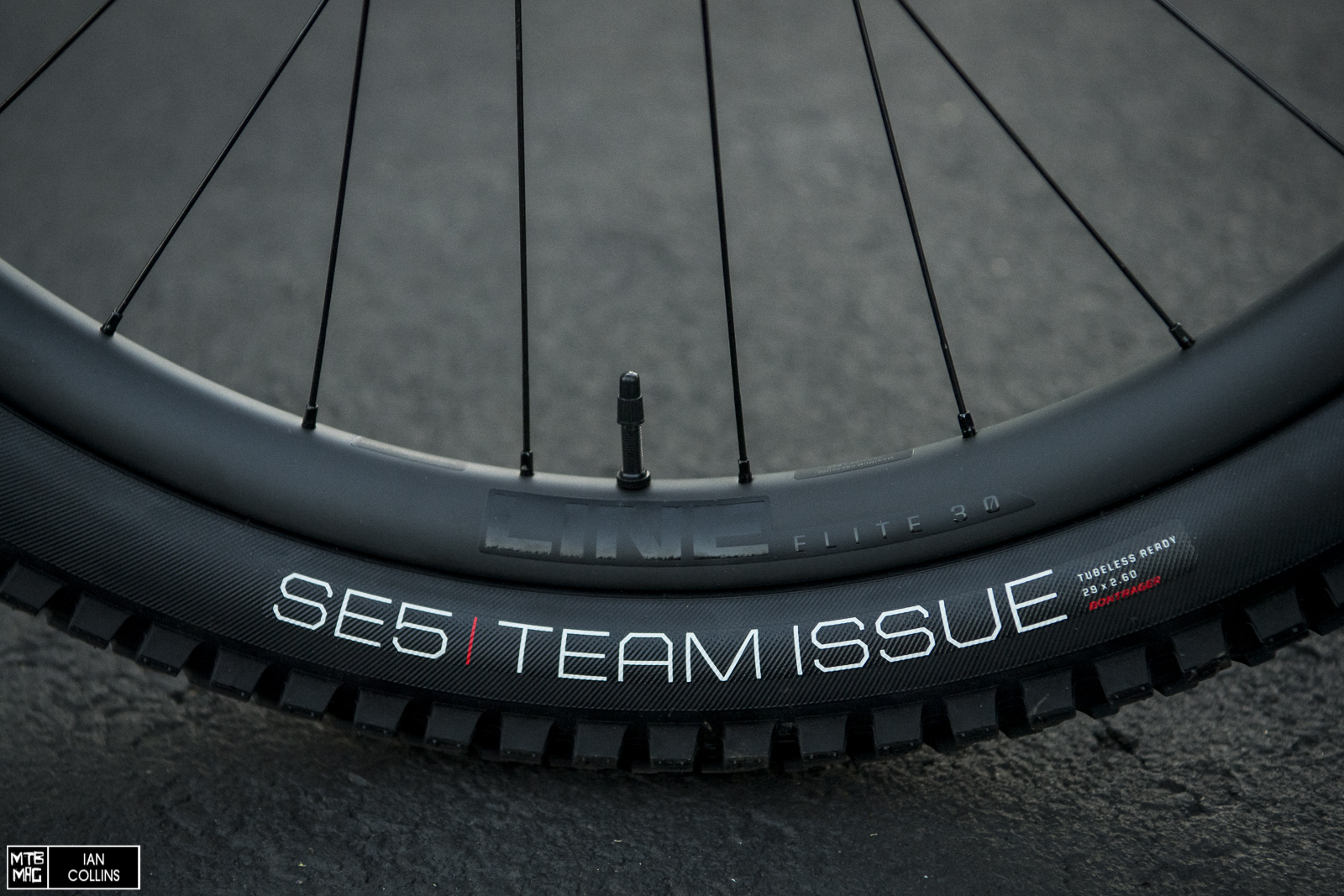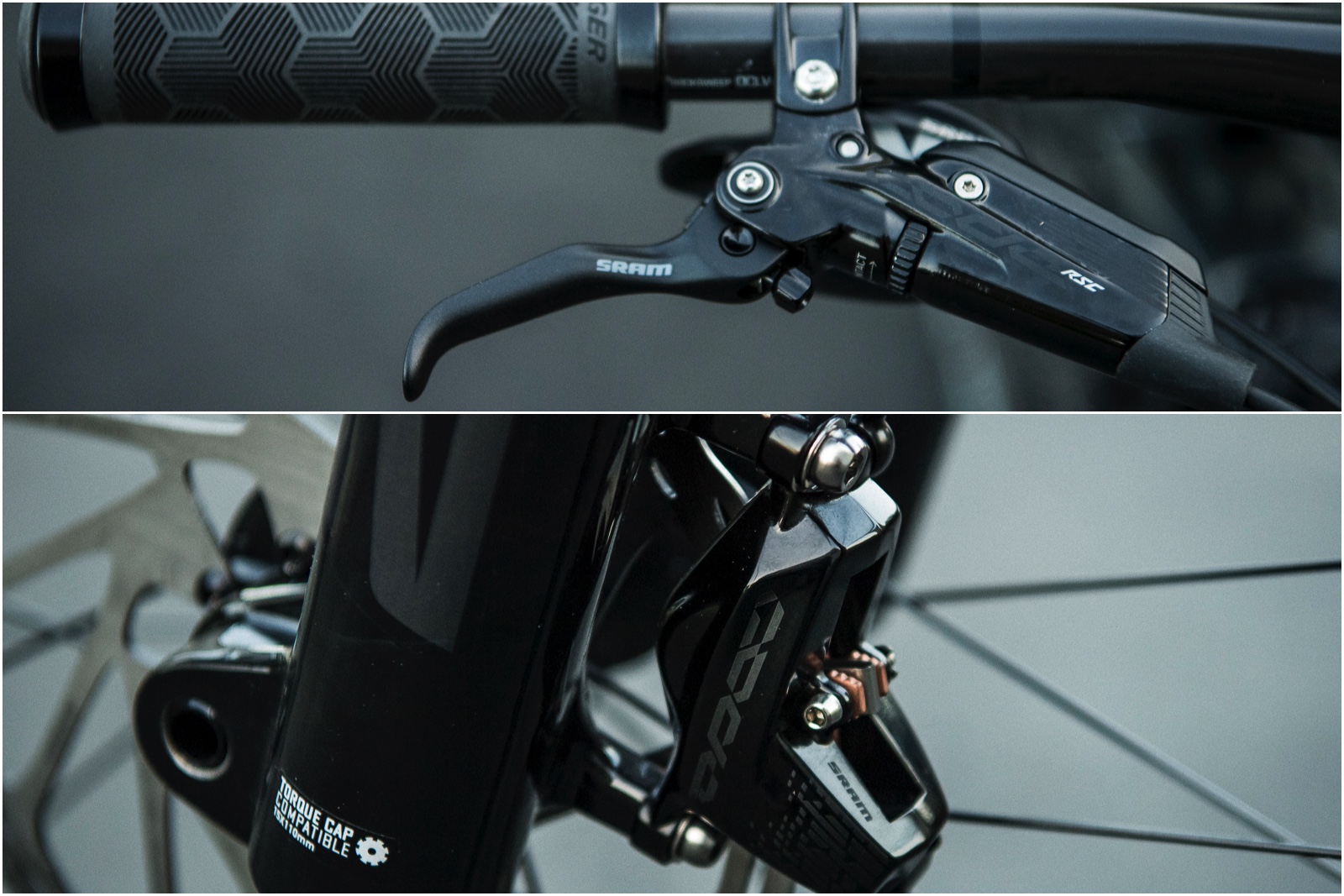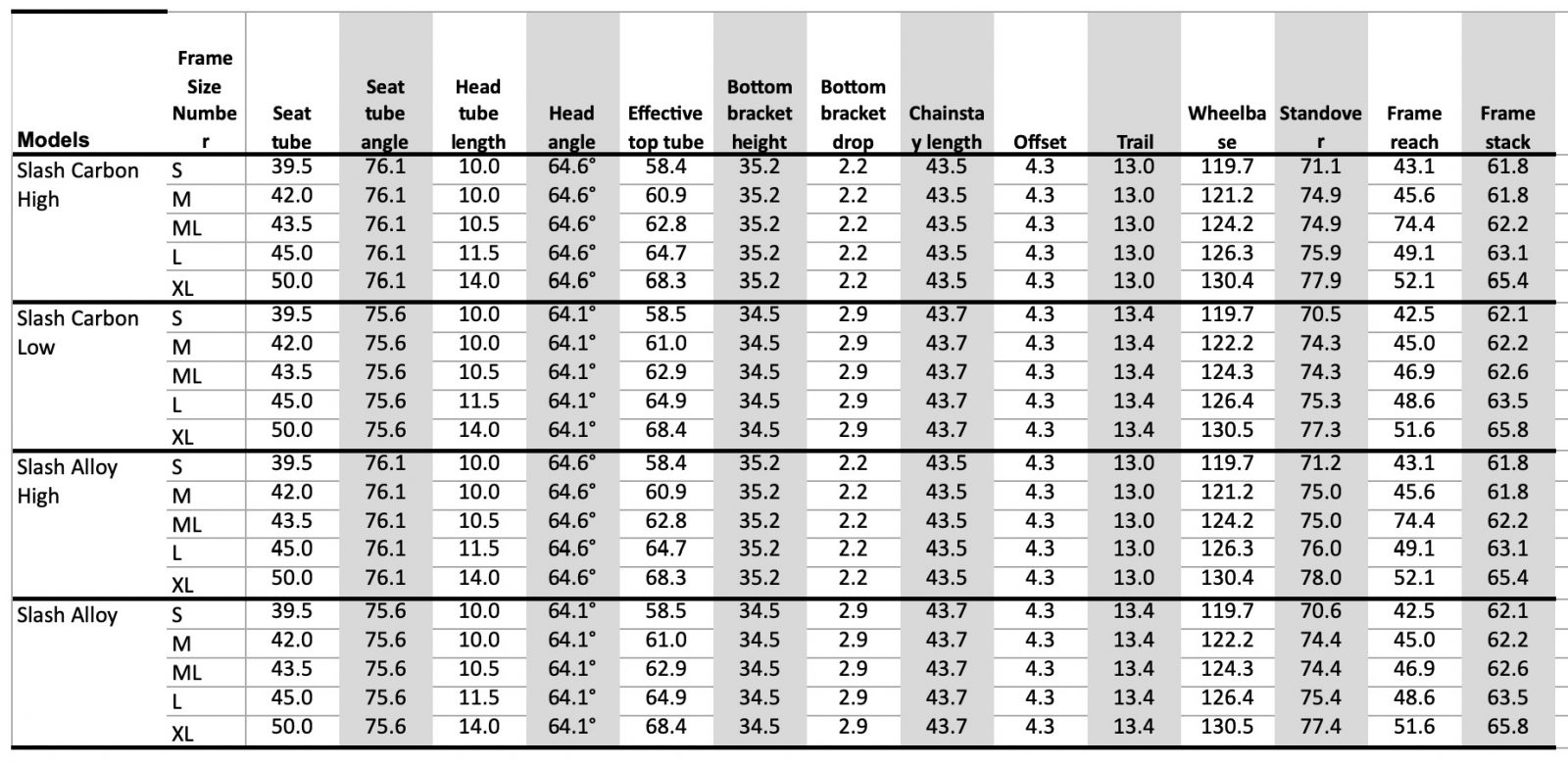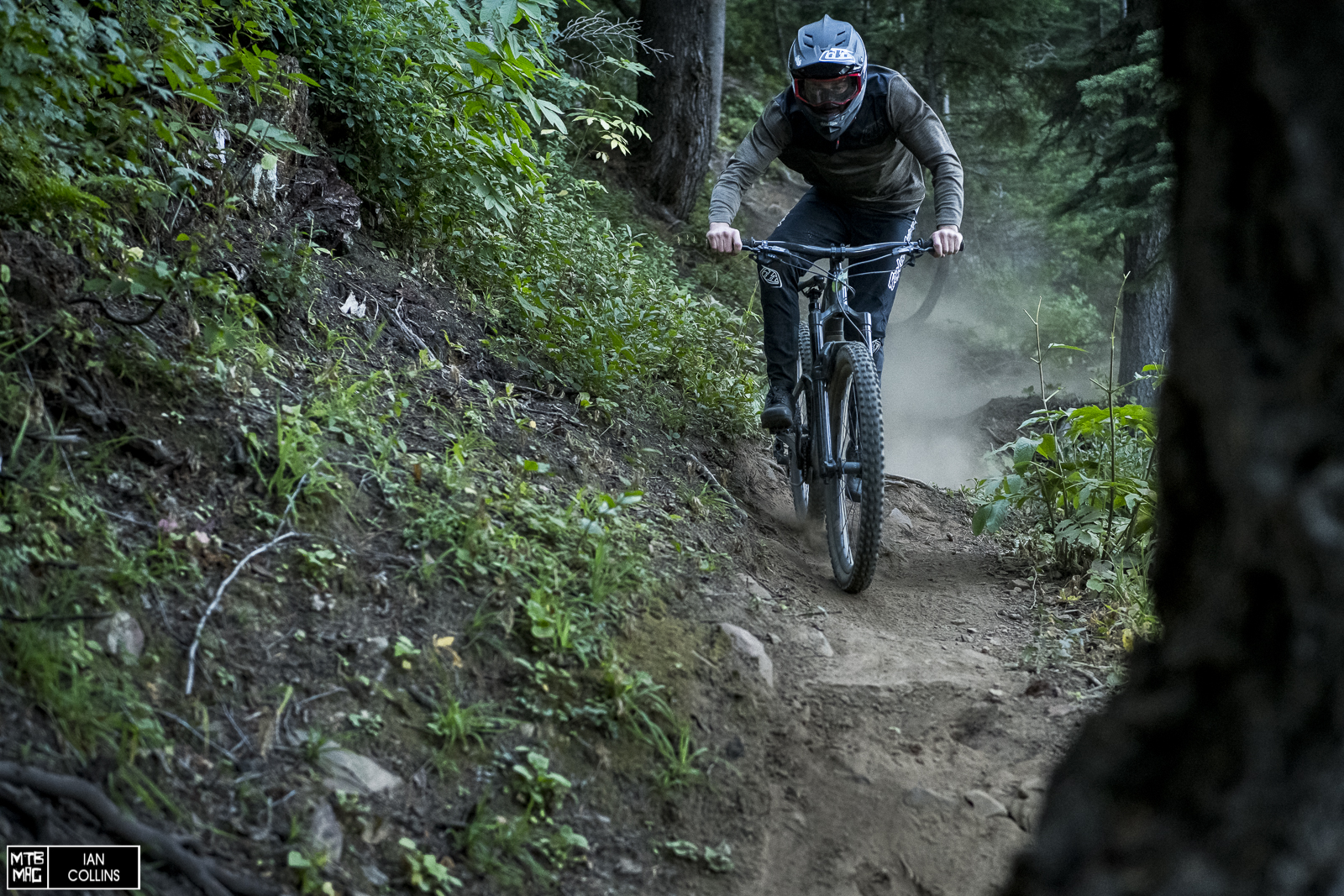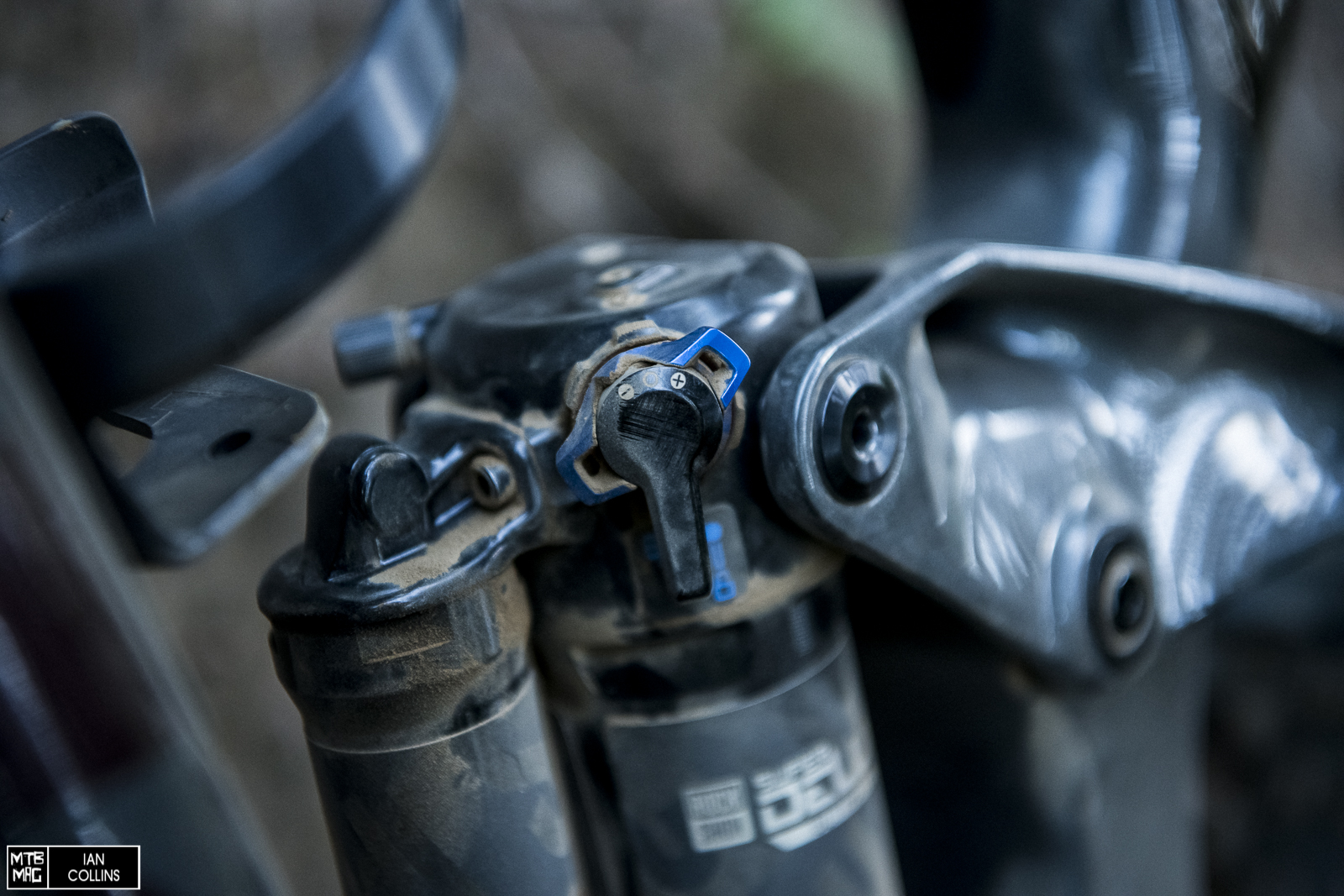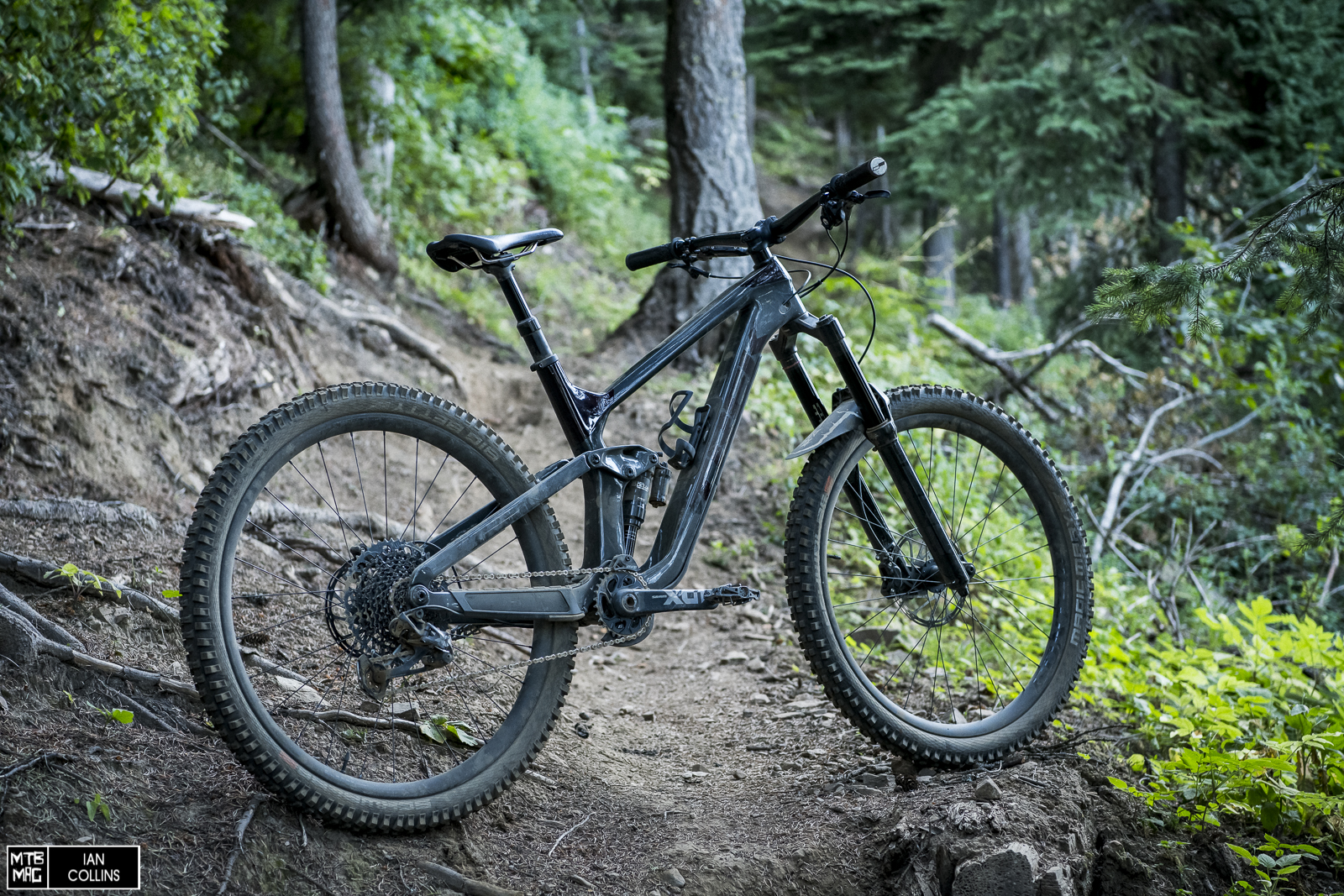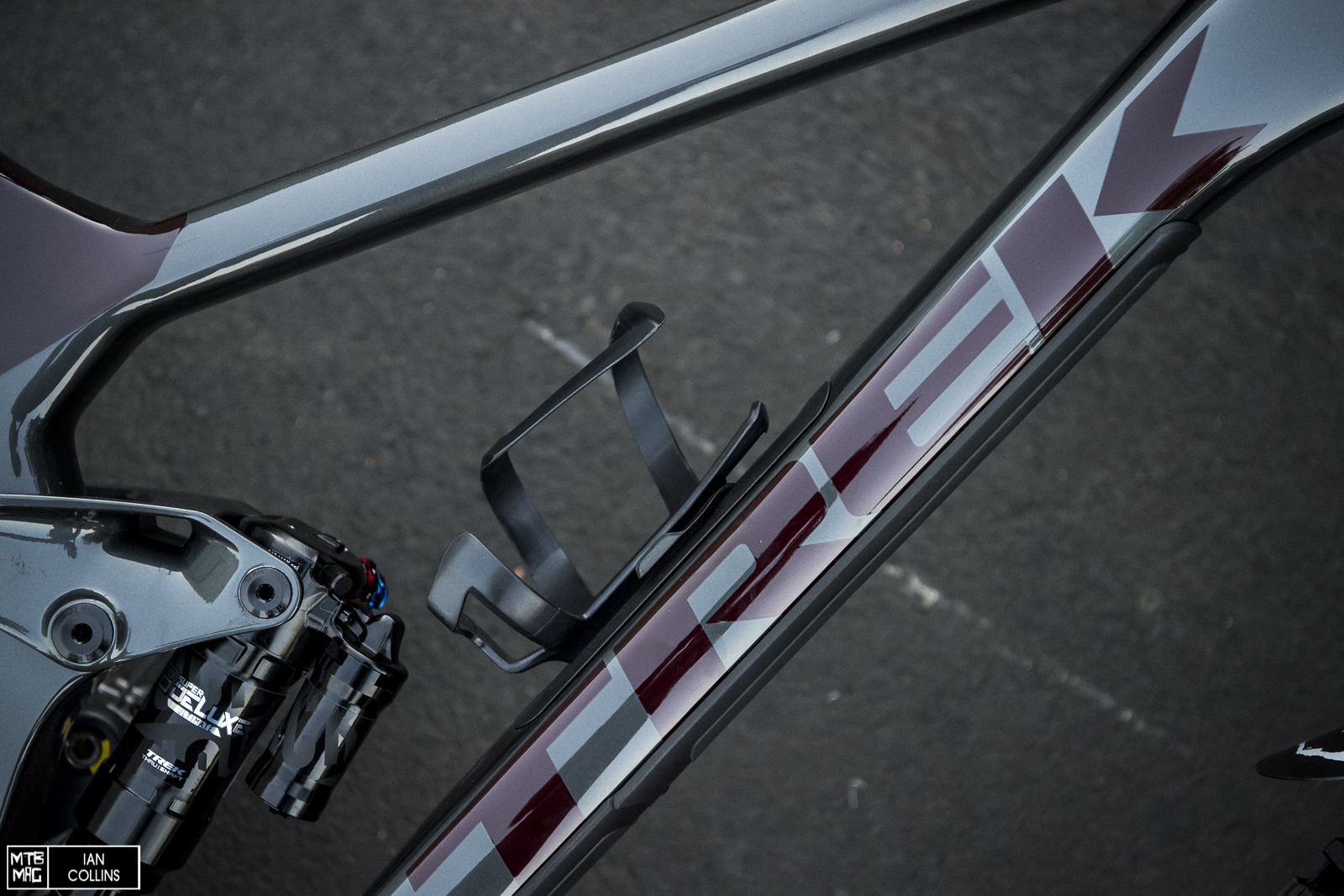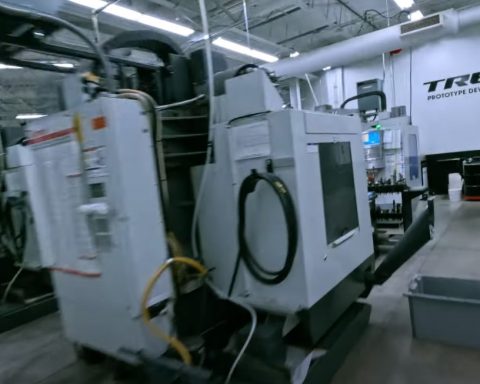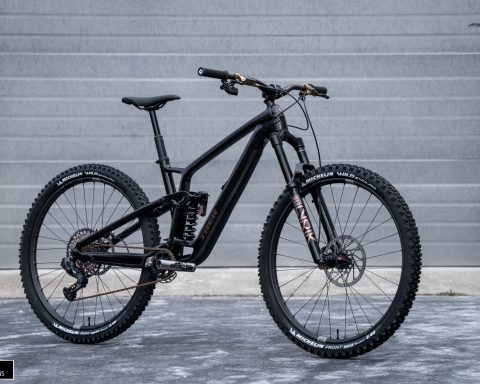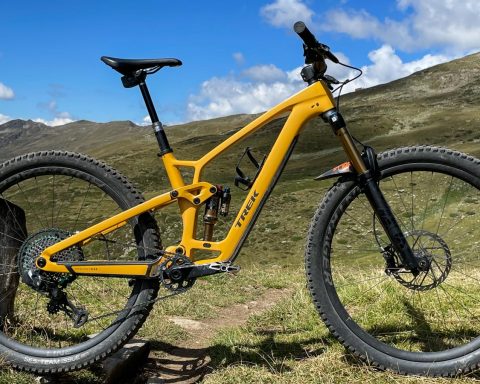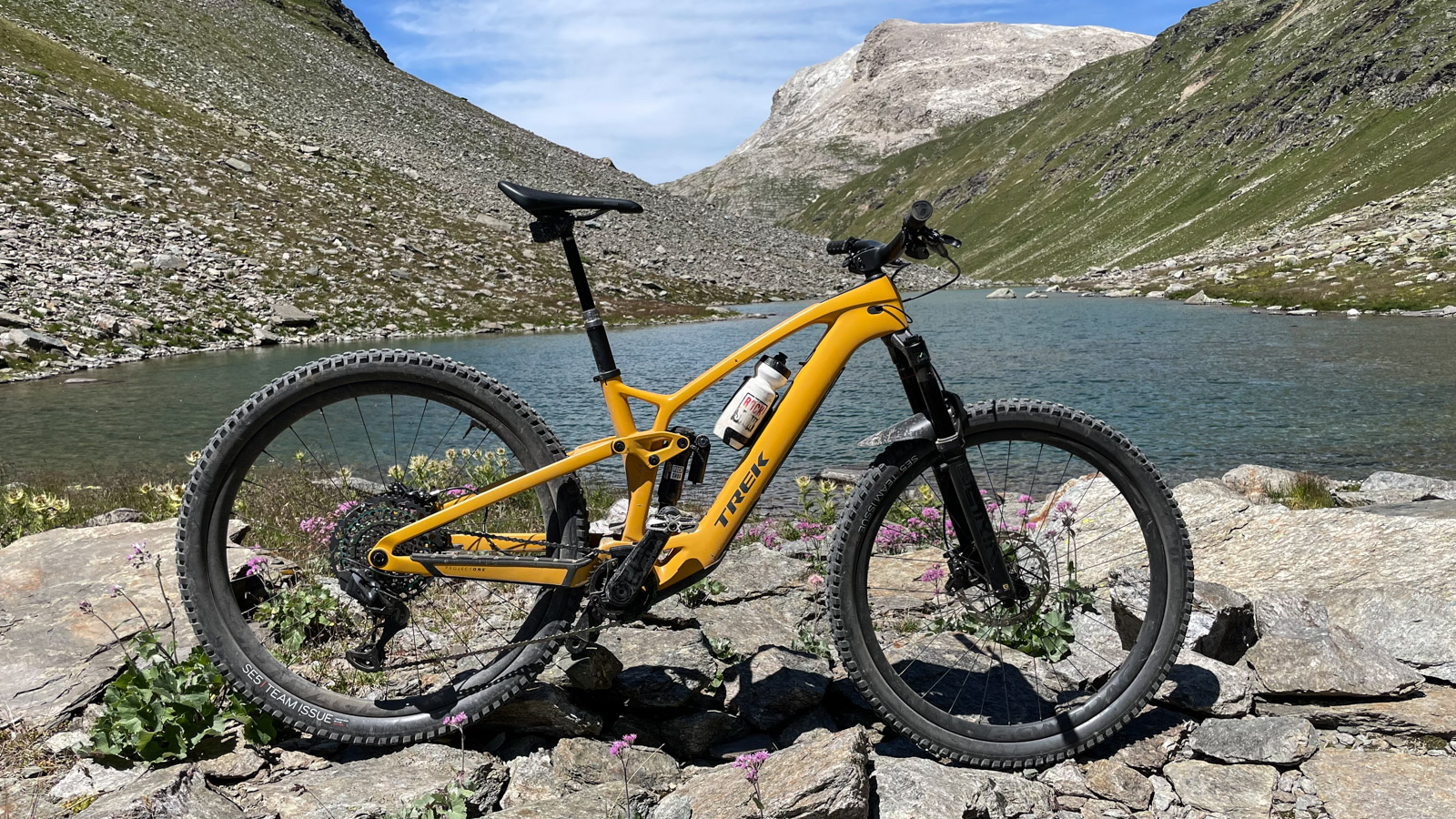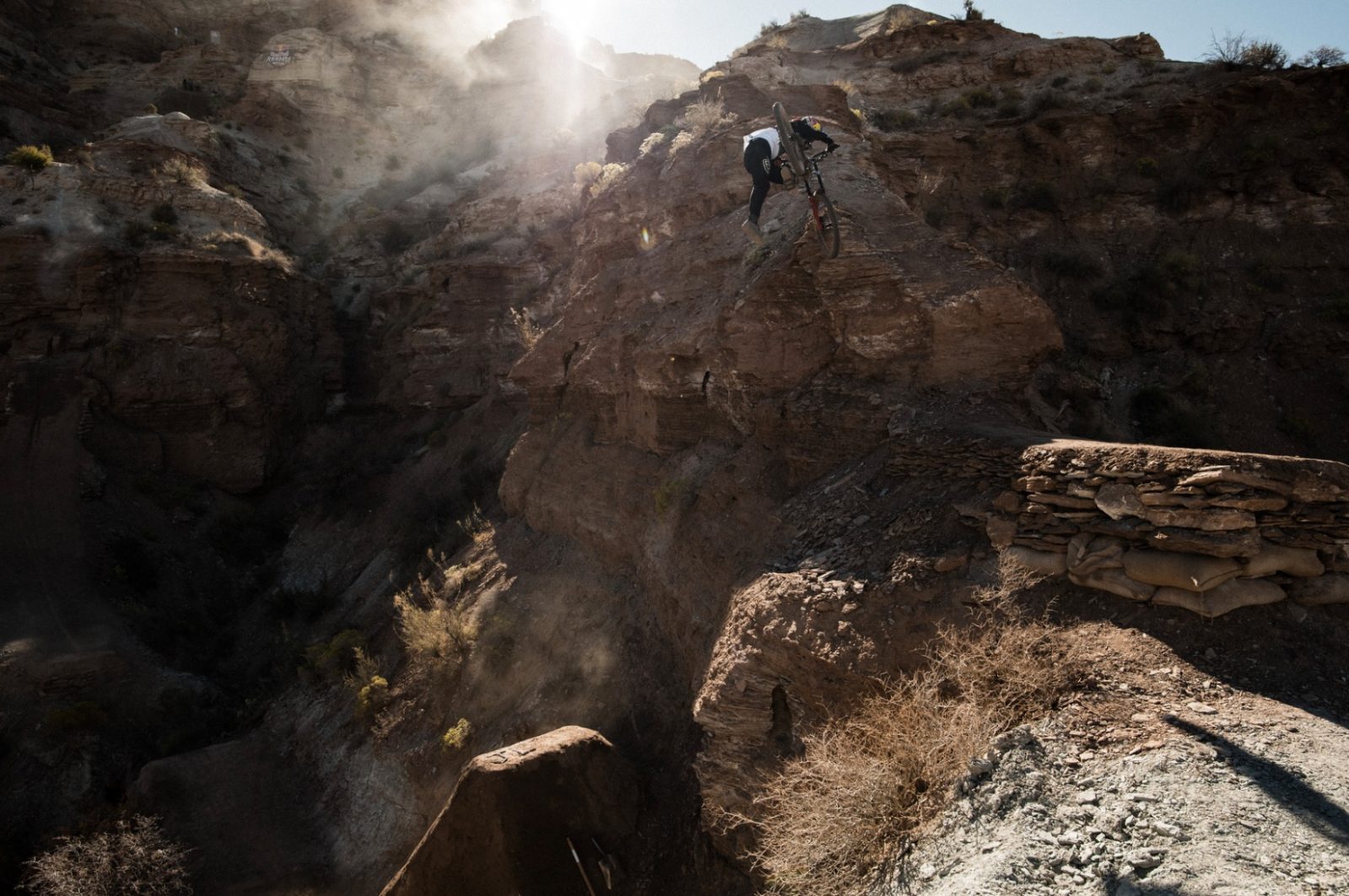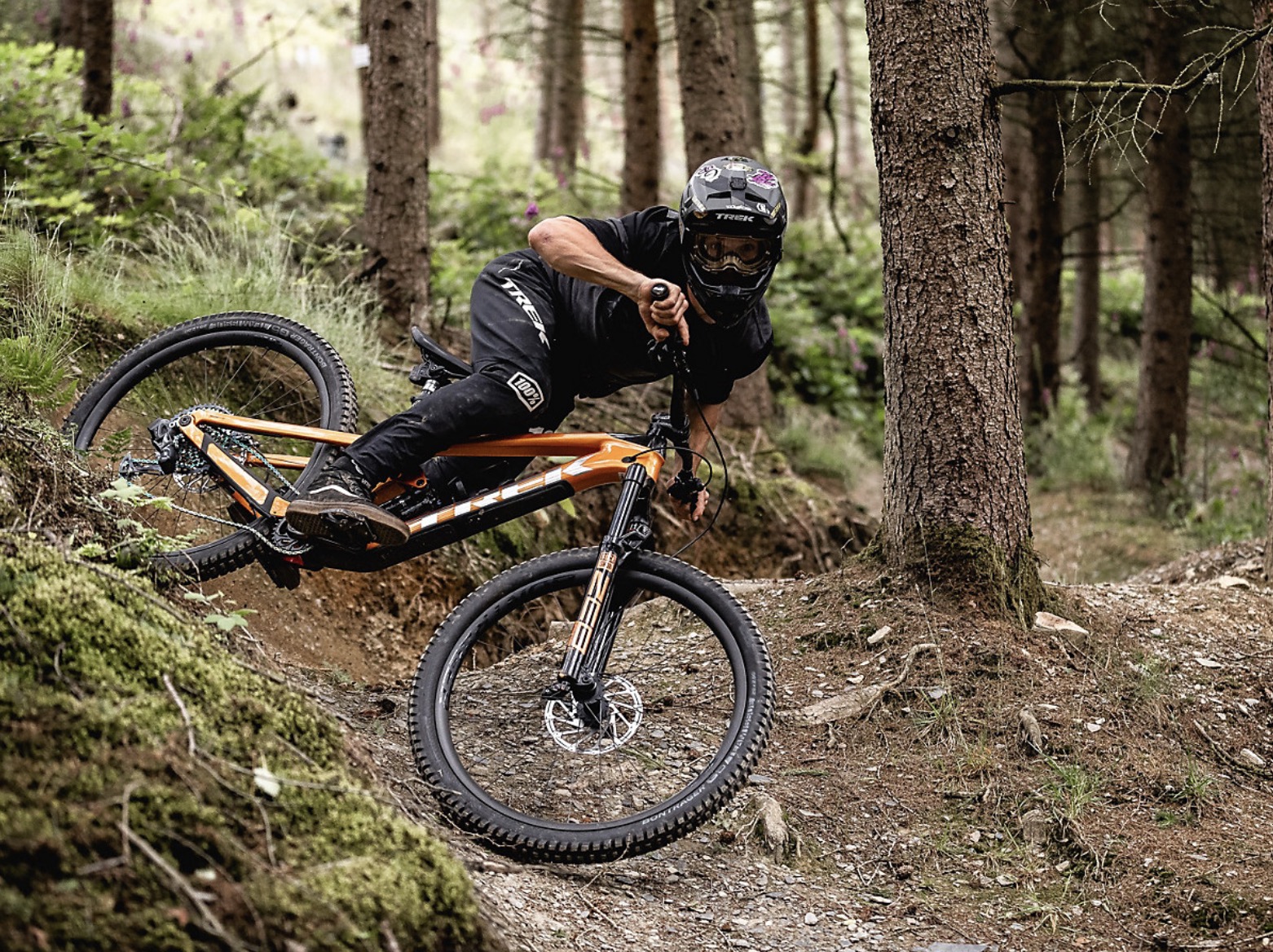It’s been quite some time since Trek last updated the Slash – four plus years ago to be a little more precise. Since the last iteration was released, there have been enormous changes in the trends popular amongst bikes in the Enduro category. Perhaps the biggest refinements have been to geometry, and unsurprisingly the new Slash has undergone major tweaks in that arena. With that said, the bike also sees a plethora of other updates such as the inclusion of downtube storage, a radically different rear shock, a 10mm front/rear travel bump and a host of other subtle and not-so-subtle changes. For the last few weeks I’ve been getting to spend a great deal of time on the new bike at Silver Mountain in Idaho. Rough and ragged with descents nearing 4,000 vertical feet per lap, Silver has made the perfect testing ground for the hungry new Slash. Read on to see how it’s been working out…
Details
- 29″ wheels only
- Boost front and rear hub spacing
- Metric shock sizing with trunnion upper mount
- 170mm front travel / 160mm rear travel
- ABP (active braking pivot) suspension layout
- Mino-Link flip chip for adjustable geometry
- SRAM Universal Derailleur Hanger
- Internally routed cables / hoses
- Knock Block 2.0 with increased turning radius
- Downtube storage
- Full downtube protection
- 32 pounds (tubeless, no pedals)
- $ 7,999.99 USD
Starting with suspension, up front we see the all new RockShox Zeb with 170mm travel and a 44mm offset crown. With burly 38mm stanchions, the fork feels nearly as stiff as a BoXXer double crown fork. Like most RockShox offerings, it has externally adjustable high and low speed compression with a single rebound adjuster via its Charger 2.1 cartridge. An all new industrial design, the option of an integrated fender and a bottom out indicator are a couple of other new features.
We could dedicate an entire story to the new rear shock but we’ll try to keep it brief. Gone is Re:Aktiv, a technology co-developed with Penske to improve pedaling performance. Thru-Shaft still remains, and this new version of the shock is based around a RockShox Super Deluxe Ultimate. Okay, so – Thru-Shaft offsets shaft displacement by having the shock’s shaft literally exit through the bottom of the shock as it cycles through its travel. This means that the shock’s reservoir and thus its internal floating piston are now mainly concerned with temperature management as opposed to also dealing with shaft displacement. In lieu of Re:Aktiv, is a standard shimmed damper (Hallelujah!) which now has a simple 3-position adjuster to help tune out pedal input. It’s not really an open / trail / lock style setup, but rather three broad settings of low speed compression. This adjuster controls the extent to which a shim blocks an orifice that manages low speed compression on both the compression and the rebound side, and thus helps mitigate pedal bob cause by both compression and extension. More on the rear shock under “Setup”…
A handful of features, both new and old. Clockwise from top left: KnockBlock 2.0 features a warmly welcomed increase 14º in steering radius, from 58º to 72º. It also no longer needs the frame bumper of old on the downtube. Much like the new Fuel EX, Trek has included downtube storage via a trap door under the bottle cage, which is a life saver all around. Like most Treks, the new Slash features Mino link, a flip chip that offers a .5º variance in head tube angle and a +/- 7mm adjustment to bottom bracket height. Lastly, Trek have also jumped on the bandwagon of stashing a multi tool in the steerer tube. Compared to the Specialized SWAT CC that this is seemingly modeled after, it does offer an expanded range in tools and an improved chain tool, although it is a pain to install and remove the unit as a whole.
SRAM’s reknowned X01 Eagle 12 speed group is standard fare, albeit now with an expanded range due to a bump from 50T to 52T in the largest gear. Up front a 30T is spec’d to motor you up the big climbs on long days, and an MRP chainguide protects your investment. One thing we found odd is the choice of 175mm length cranks – on a bike this aggressive, we would have expected and very much preferred shorter 170mm cranks. Aside from that, much like we’ve come to expect over the last couple of years, the Eagle group has offered phenomenal shift quality and a huge range.
Up front, it’s mainly in house spec, starting with Bontrager lock on grips which were swapped for our trusty Sensus Meaty Paws. The handlebar itself is a crazy wide 820mm Bontrager Line Pro carbon fiber bar. It has a 35mm clamp and a 27.5mm rise. I trimmed the bar to 800mm, which was easy due to its guide marks. Lastly, the Bontrager Line Pro stem meshes nicely with the Knock Block system, although that does leave you relegated to 10mm bar height adjustments. Feeling like my hands were resting a bit too far behind the front tire’s contact patch, I switched the stock 35mm length stem for a 45mm and felt at ease right away.
The latest version of Bontrager’s in-house dropper post has been exceeding expectations. Its action is smooth and it is stiff and supportive, due to the oversized 34.9mm diameter. As far as the lever goes, at first it seemed odd that it is placed so close to the handlebar, but I eventually took to it and realized that it helps you keep a better grasp on the grip when actuating it. The Arvada saddle had a good silhouette and just the right amount of padding, although it doesn’t seem to be all that rugged. All in all though, no complaints.
As one of the more high end models, we were happy to see Bontrager’s Line Elite 30 wheels spec’d on this model of the Slash. The 29mm inner diameter carbon fiber rims have seen an updated profile that is a bit shallower to help take the edge off and give them a smoother ride quality without compromising stiffness. Thicker rim walls provide better impact resistance while the 108 point engagement provides fast power transfer. As far as tires go, the SE5 / SE4 combination are decent tires, but I don’t feel they are up to the task that the bike is clearly capable of, on the whole. The bulk of my testing was spent on Schwalbes with thicker casings and a burlier tread pattern. Speaking of tread pattern, it’s been some years since we’ve seen anything new from Bontrager and in my opinion, they are past due…
Last, but certainly not least, SRAM Code RSC brakes are tasked with slowing things down. These are my brake of choice on my personal bikes and I can’t say enough good things about them. The 200mm front and 180mm rear combo bolts up nicely with no adapters and gets the job done. Hard chargers who frequent steep terrain and/or long descents may want to swap up to a 200mm rear, but in stock form they should be just right for most riders.
Geometry
While the new Slash sees a slew of new developments, the geometry updates are substantial to say the least. First off, the size range gets expanded from four up to five size offerings. The chainstay length hasn’t changed much, but the head angle has slackened one full degree and the BB dropped by a few millimeters. Speaking of angles, both the virtual and effective seat tube angles have been made steeper by a two full degrees for improved climbing. Lastly, reach numbers grew by roughly 25-30mm depending on the given size. All in all, the new Slash is a much more up to date bike with aggressive, but not ground breaking, numbers all around.
Setup
Starting with suspension, I began at my usual 20% sag up front and 30% sag out back, and to be quite honest I never once looked back because I was never compelled to. Straight out of the box, the suspension curve and progression rate was dead on, so aside from playing with rebound and the compression settings a tad, I never felt the need to add or remove volume reducers at any point. Keeping that in mind, this new version of the RockShox Super Deluxe with Thru-Shaft allows for one further element of adjustment – you can run zero or one negative air spring reducer, should you choose. This will essentially affect your off the top feel, being softer or firmer, respectively. Speaking of air springs, the new air can features a negative air spring volume that lands roughly between the standard Super Deluxe air can and a MegNeg – at least according to Chris Mandell at RockShox. On top of that, the all new shock has some very interesting features – some of which could provide a glint into future products from RockShox. The rebound dial is now numbered, and for what it’s worth I found myself right in the middle at the number 5 setting, which is spot on for a 180 pound rider. As far as cockpit goes, it was easy to get all dialed in with a longer 175mm travel dropper seatpost on my size Large, but I did wish I could have raised the handlebar a bit higher. Trek ships the bike with two 10mm spacers that are integral to Knock Block. For the taller, lankier riders out there it would be nice to see the steerer tube cut a little longer so that 3 spacers could fit. This means that I’ll need a taller bar or stem if I want to go any higher – a small matter, but worth mentioning.
On the trail
When testing a new bike, my initial saddle time is almost always spent on a climb as most of my time on the bike is pedal powered. With the Slash however, I was fortunate to squeeze in a great deal of descending (roughly 75,000 feet of vertical) in very short order, thanks to the fact that I now live just 40 minutes from Silver Mountain. Dropping into the upper trails you’re greeted by loads of super sharp rocks that are both loosely strewn about and firmly embedded into the dirt. As the trails dip down into the woods, as you’ll see in the video below, there are loads of roots, braking bumps and bomb holes. So while the area I tested in is plenty rough, it isn’t all that steep – not Santa Cruz loamer steep anyway. Silver’s borderline excessive mid-grade bench cuts and off cambers will make a full DH bike feel difficult to muscle around at times, but duty wise, the Slash turned out to be just right for this type of riding. So, how did it go?
Well, straight away, up front I was very impressed by the Zeb and this was actually my first time aboard one. It felt very familiar as its Charger 2.1 damper makes the action feel a lot like a Lyrik or a Pike. The air spring’s lower operating pressures, which I was able to run in the 60 PSI range as opposed to the 90 PSI range, improved sensitivity. Perhaps that could also be attributed to its burly chassis, which definitely wowed me in terms of stiffness and steering precision. Getting to the frame itself, out back I’ve got to admit – I was never really a big fan of Re:Aktiv and I’m happy to see it gone. Its hydraulics interfered a bit too much as it tried to create the perfect bike that climbed like a hardtail without needing to lean on a lockout. To me, it always seemed gimmicky and inhibited the flat out performance as the pedal platform never quite “got out of the way” enough in the rough stuff. This is absolutely NOT the case with the new rear shock, which has totally won me over.
Now, before I continue heaping on praise of the rear shock, it’s worth pointing out that on the kinematic side, Trek’s engineers have also done their homework and done it well. I’ve always felt that ABP has been one of the most compliant feeling layouts on the market, especially under heavy braking, and on the kinematic end it shines brightest in successive mid sized events such as babyheads, chunder, roots, braking bumps, etc. This bike carries on that tradition and does it better than ever before. With past Trek models that used Re:Aktiv, after just one ride, I often found myself pondering if it would fit a coil rear shock, hoping to get more compliance out of the actual shock itself. With the new Slash I never once felt the need for a coil, even on the aforementioned brutal 4,000 foot descents. So, this new RockShox Super Deluxe with Thru-Shaft sure seems like a whole new air shock altogether from RockShox. Regardless, the action was excellent with bountiful traction, plenty of control, just the right air spring curve and a nice range of usable adjustment both on the hydraulic and pneumatic side.
It’s worth discussing the new Low Speed Compression switch (in blue) for a moment. When doing park laps, I left it in the most open of the 3 positions and got all the traction I could ever ask for. Initially I started out doing laps in the middle setting and every so often I got the odd, perceptible spike now and again when transitioning from smooth sections to a first initial impact. I personally found that although the variance between the 3 settings is nowhere near as extreme as an “Open, Trail, Lock” style lockout, I preferred to use this lever in the same fashion. When descending for long periods of time, I left it fully open. When grinding up long climbs I left it in the *almost firmest setting – which by the way feels pretty compliant but pedals very efficiently. Note the shock has a totally firm lockout via the two-position black lever, I tested it out but never used really it – surely riders will appreciate it on fire roads though. Anyhow – on variable trails I just left it in the middle position. Lastly, I liked that the adjuster sits at 45º on the shock body, which makes it easy to reach while riding. Left handed riders will like it even more based on its position.
Okay, so the suspension flat out rules. What about geometry, handling, features and all the other important stuff? Beginning with the former, I actually started out and hardly strayed from the higher / steeper geometry option due to the longer 175mm cranks. While I can’t fault the ride quality in this setting, I could certainly see myself and others taking advantage of the lower / slacker option on steeper and faster terrain, so it is great having the option, but I would personally prefer to go down that road with shorter cranks. On the whole, the Slash has made leaps and bounds and landed right about where a modern Enduro bike should be, geometry wise. The front:rear center length ratio is just right, making it well balanced front to back. The bike is easy enough to manual and get around tight corners, but doesn’t give up much in terms of stability. The head angle is just right – a bit more nimble and sprightly in the high position. In low/slack it is detuned and desensitized to speed a bit more, but does flop a touch more on the climbs, which is to be expected.

If I had one complaint it was that, although Trek steepened the seat angle by 2º, in my opinion they could have taken that further still, to make for a bike that puts your body in an even better position to grind out climbs all day, regardless of the fact that you’re basically on a downhill bike. A ~75.75º (average) effective seat angle is nothing to scoff at, but I’d love to see it more like 77º. Then again, I’ve got long limbs and a short torso, and riders with opposite and/or more average proportions won’t be as phased, because they won’t require such a tall seat height and thus will sit further forward.
In terms of the overall handling, I can’t think of a single negative attribute. This is partially credited to the aforementioned geometry and suspension, but also a nod is very much due to the frame’s excellent layup and construction, which makes it just rigid enough without riding rough, and helps it boost when you need to get it off the ground. Despite being a long travel bike, Slash assertively walks the line between surefooted confidence and a sprightly, poppy demeanor. It’s easy to both hold the line and change the line in a millisecond. I went into this review thinking it would feel like a lot of bike, but it didn’t. At 32 pounds it’s actually pretty light weight when you consider just how much bike this is, and that it picks up roughly a pound from its full coverage chain guide – something that also earns the product managers the tip of a hat.
Regarding spec, for the most part I think Trek has done a stellar job at picking out a good mix here. The Zeb fork is a standout and both the Eagle drivetrain and Code brakes have earned high praise from us over the years, so I won’t drone on about them. Grips aside, the cockpit leaves little to complain about despite being fully in house parts from Bontrager. I quite liked the revised dropper post – it was smooth and less flexy on the climbs due to the oversized 34.9 diameter. The wheels have proven, like their slightly more expensive counterparts, to be really damn good. I had more than a handful of scary rock to rim impacts that had me pulling off trail to assess the damage, only to find none. Central to wheels, there was the issue of tires which I went over in “Details” – simply put, more aggressive riders will likely want to swap them out on short order.
As far as the noteworthy Trek/Slash specific features go, I will say that these days I’m much more of a fan of Knock Block than I once was. First and foremost, with the increased turning radius, now you straight up don’t even notice it. In fact if you do notice it while riding, it means you’re likely just about to hit the deck. And this is where it’s most beneficial. Since my first time riding Knock Block about 4-5 years ago, I have had one rather dramatic crash which resulted in a split brake line on a bike without Knock Block – the brake line split from the bars spinning too hard without a steering stop. On my very long walk home I spent a great deal of time talking to myself and thinking that maybe Knock Block isn’t that bad after all. In terms of the downtube storage, it’s obviously brilliant – in fact, it makes it very hard to go back to other systems where you’re relegated to stashing odds and ends on your bike.
Overall
So, aside from a couple of minor grievances – long cranks, flimsy tires, seat angle could be *slightly* steeper – the Slash is a super impressive machine. Every single attribute has been greatly improved over the past model. It’s very manageable for long days in the saddle with big climbs, but where it shines most is when things get rough…really rough. It absolutely gobbles up impacts of all speeds and sizes flawlessly. Both front and rear it was supple, sensitive and full of traction. It’s near impossible to get it to misbehave in the successive mid-sized hits, and on heavy impacts I used all the travel often and the o-rings just kissed the bottom out indicators – but I never felt one single harsh bottom out. It was the suspension performance above all that impressed me, and the handling came in at a close second. Sprinkle in smart features like downtube storage, Knock Block plus little things like the shuttle guard and you have a winner.
In my closing thoughts I always factor in value and yes, $7,999 is a lot of money for a bike, but it’s par for the course when it comes to flagship spec, and this specific model features a damn good parts pick, with carbon wheels and no major corners cut. If this model would leave your wallet too light, just know that there is a full range of new Slashes at a wide array of price points and aluminum frame options – consider the Slash 8, which packs an amazing punch at $4,000. Last but not least, props to Trek for including the downtube storage feature on those aforementioned metal models as well. All in all, the Slash is a bike park monster and would be an excellent candidate for a privateer racer as well. You’d be a fool not to consider one if you’re in the market for a new Enduro bike.

